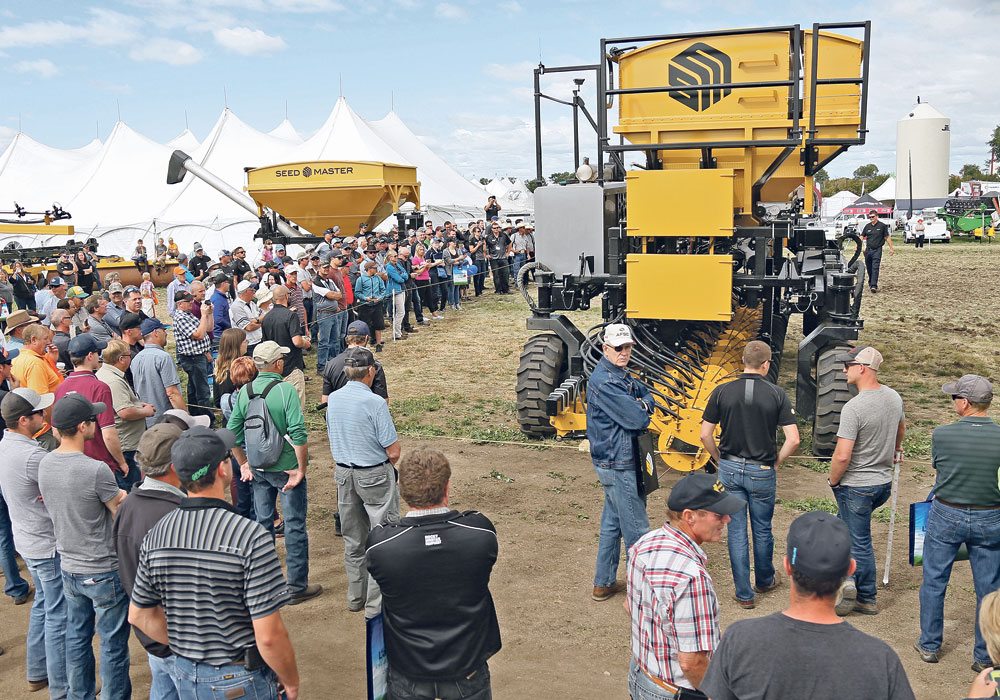It seems like the future of almost everything that moves lies in autonomous technology.
Small and large companies are spending billions to develop driverless cars and driverless transport trucks.
The story is similar in the world of agriculture. Established players like Case IH and machine shop start-ups are working on autonomous farm vehicles capable of going back and forth across cropland for things like cultivation, seeding and spraying.
The concept seems like a good fit for farming because producers spend many lonely hours inside tractor cabs, sometimes through the night and into the wee hours of the morning.
Read Also

Crop quality looks good this year across Prairies
Crop quality looks real good this year, with the exception of durum.
But there’s one problem. Or maybe two problems.
Other stories in The 2017 Innovation Issue:
- New genetic tools offer way to restore cattle vigour
- Technology can help breed better cattle
- Biotech companies prospecting for microscopic gold mines
- Bee buzzes critical to calculating crop pollination
- Fungus could aid plant growth, reclaim oil sites
- Cracking the megapest genetic code
- Genetic mapping vs. genome sequencing
- French robot prowls the chicken coop so you don’t have to
- New laser technology proves successful for B.C. orchard
- High-tech deterrent devices protect crops from … intruding elephants?
- Diamondback moths focus of Cornell study
- VIDEO: Print your own parts?
- Bees may be serving up humanity’s next big food … and it isn’t honey
- Big doubts about big data
- The little plane that did
- Soil mapping soon to be more usable
- Managing fields could soon move to plant level
- GM pollen: it gets around
- Farm wi-fi connectivity opens new world of possibilities
- Nanotechnology to alter animal health, food systems
- As big data comes to the farm, are policy makers keeping up?
- Farmers not rushing to grab digital tools: survey
- Connecting the DOTs
- Hands-free field test
- Researcher understands farmer doubts about hands-free farming
- The trouble with telematics
- Sensor sensibility
- The discovery that could shake up the beer industry
- Grow your own clothes
- Blockchain technology offers food safety, traceability and more
- Supercluster makes big innovation pitch
- Quicker, cheaper biofuel production in the works
- Alternatives to livestock antibiotics are difficult to assess
- A revolution is coming
Many farmers aren’t ready for driverless tractors and others don’t want the technology at all.
About 75 percent said they won’t be ready for three to five years and only a small percentage of farmers were interested in investing in autonomous vehicles.
“Just four percent cite it as a high priority for investment and 70 percent rank it as a low priority,” said a summary of the survey, designed to measure farmer readiness for innovation.
The survey looked at farmer perceptions of four emerging technologies: data collection and use, specialized sensors, autonomous vehicles and telematics, such as remote system diagnosis, and connecting machines to equipment dealers.
Of the four technologies, respondents were most reluctant to adopt autonomous vehicles. A few respondents also included personal comments, explaining why they aren’t interested in driverless tractors.
“(There’s) no freaking way those things (will) ever be on my property, replacing friends, neighbours, and family working together,” one farmer said.
Another producer said driverless vehicles would extinguish the human element of rural life.
”By removing the farmer and his need for employees, you remove the basics of life as well.”
Adam Gurr, who farms near Rapid City, Man., understands the reluctance farmers feel toward driverless tractors. Many growers enjoy being in the field on a tractor.
“From my brother-in-law, in particular, he’s mentioned that he likes running the tractor,” said Gurr, who operates Agritruth Research, an agronomic research firm. “For some of the jobs we do, like seeding, I love being out there too.”
There’s also the social aspect of being out in the field with a group of people, working together to harvest a crop or get seeding done before it rains.
About 39 percent of survey respondents said budget constraints were the primary reason not to invest in autonomous vehicles.
The number two reason, at 14 percent, was that it’s too complicated.
On the positive side, respondents said autonomous vehicles would save time and decrease operating costs.
The Western Producer contacted a couple of companies developing autonomous farm vehicles, but didn’t get a response by press time.
Western Canadian farmers may be unsure about driverless tractors, but many investors and corporations are betting on the technology. In 2016, Goldman Sachs predicted that small, autonomous farm vehicles could become a $45 billion market.
Gurr isn’t opposed to driverless tractors, but he would prefer to have an autonomous setting on a tractor.
“So you can use (the tractor) for other things. It’s just not an autonomous unit,” he said. “Maybe you could just put it on autonomous because you’ve got to do something else for three or four hours.”
















